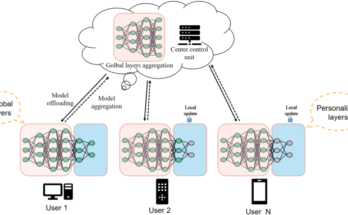Encryption converts plain text into a coded format, making it unreadable without a decryption key. This transformation is achieved through complex mathematical algorithms that scramble the original message, making it appear gibberish to unauthorized individuals. Only the intended recipient, who possesses the corresponding decryption key, unlocks the message and restores it to its original form.
Encryption technology has evolved significantly, with various methods and protocols developed to enhance security. The Advanced Encryption Standard (AES) is the most widely used encryption algorithm, considered virtually unbreakable by current computing standards. AES employs a symmetric key algorithm, meaning the same key is used for encryption and decryption. This ensures that only the intended parties access the encrypted message.
Role of public-key cryptography
While symmetric-key encryption is highly secure, it poses a challenge when exchanging the encryption key securely. This is where public-key cryptography, also known as asymmetric encryption, comes into play. The public key is freely available and is shared with anyone, while the private key is kept secret and known only to the owner.
If someone wishes to send an encrypted message, they encrypt it using the recipient’s public key. With a private key, only the recipient can decrypt the message once it has been encrypted. This eliminates the need for a key exchange, as the public key can be openly distributed without compromising security. Public-key cryptography forms the backbone of many secure messaging platforms, ensuring messages are exchanged confidentially. Find out More about the author by check my blog.
Importance of end-to-end encryption
While encryption technology provides a robust framework for secure messaging, it’s important to consider the specific implementation used by different platforms. End-to-end encryption is regarded as the gold standard for secure messaging. With E2EE, the encryption and decryption process takes place entirely on the users’ devices, meaning the message is encrypted before it leaves the sender’s device and can only be decrypted by the intended recipient. Even if the message is intercepted during transmission on a server, it remains unreadable to anyone without the proper decryption key. It adds another layer of security, as the service provider cannot access messages. Popular messaging apps have implemented E2EE, prioritizing user security.
Researchers and developers are continually exploring novel methods to bolster the security of online communications. An emerging field in this realm is quantum cryptography, which capitalizes on quantum mechanics principles to establish highly secure encryption. Even though quantum cryptography has just begun, it is promising to transform secure messaging. With the increasing potency of quantum computers, conventional encryption techniques may become susceptible to breaches. Quantum cryptography seeks to address this issue by employing the foundational principles of physics to safeguard communication channels. Keep up to date with the latest developments in encryption technology as we navigate the ever-evolving landscape of online security. We collectively work towards a safer, more private digital future by embracing secure messaging practices and advocating for strong encryption standards.




